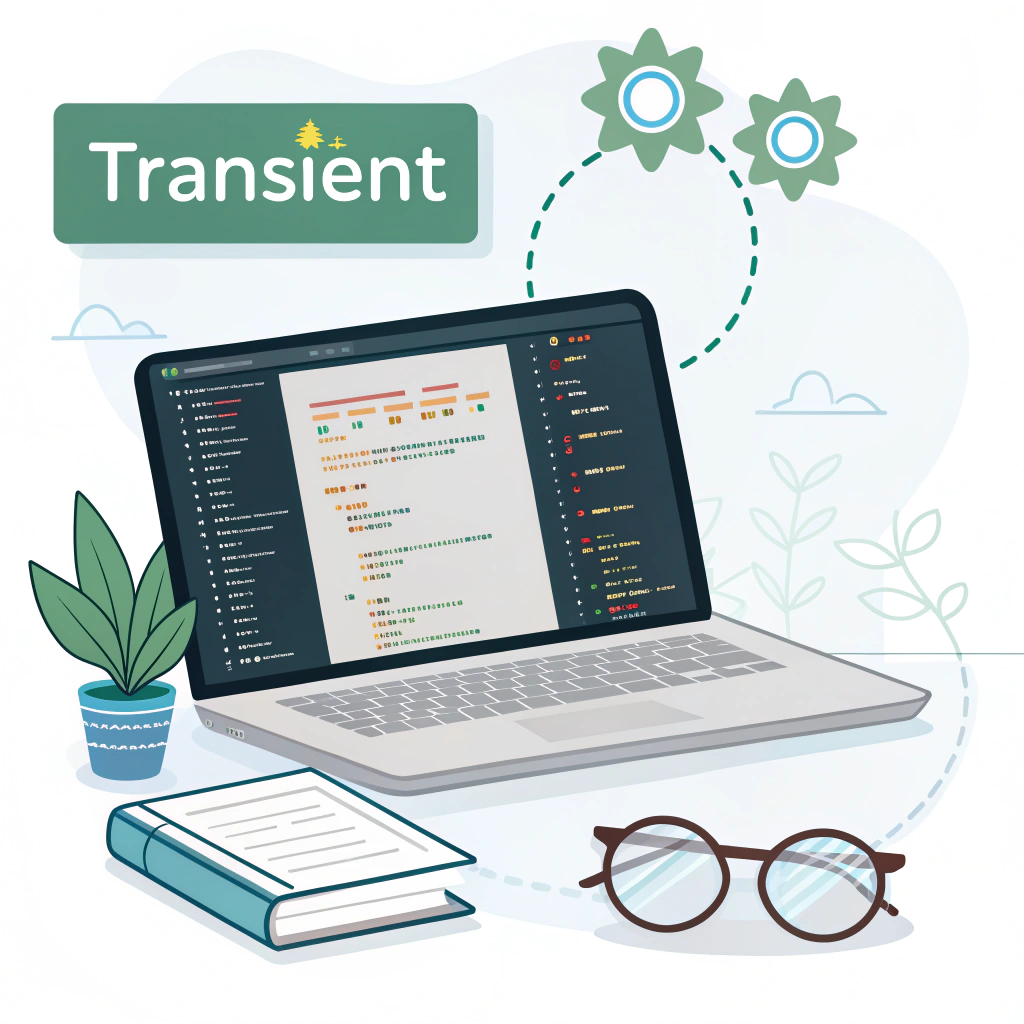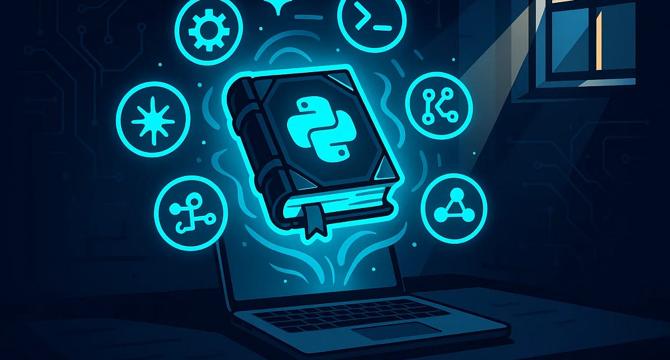Programming News
Dev
338

Image Credit: Dev
Creating AI Agents That Use Your MCP Server (Part 4/5)
- Learn how to create an AI agent using an MCP server for customer interactions.
- Steps include LLM integration, building the AI agent, and creating intelligent workflows.
- Features like daily analysis, negative feedback handling, and weekly reports are implemented.
- The system enables intelligent decision-making and offers a comprehensive feedback handling solution.
- Test the AI system and explore extending functionalities for specific business needs.
Read Full Article
20 Likes
Medium
333

Image Credit: Medium
Understanding the @Transient Annotation in JPA with Spring Boot Examples
- The @Transient annotation in JPA is used to exclude specific fields from being persisted in the database.
- It is helpful for storing temporary data, calculated values, or helper fields that are only relevant during the application's runtime.
- The annotation is a clear indicator to the JPA provider, such as Hibernate in Spring Boot, to ignore marked fields during the persistence lifecycle.
- This article explores the purpose and practical use cases of @Transient with Spring Boot and JPA to enhance data model efficiency.
Read Full Article
20 Likes
Dev
74

Image Credit: Dev
Setting Up Your First MCP Server with Python (Part 3/5)
- Developers embark on setting up their first MCP server for feedback collection.
- Steps include environment setup, Python installation, project creation, and server understanding.
- A Python script for a feedback server is built, tested, and explained thoroughly.
- Key aspects covered: resources, tools, server functionalities, common issues, and next steps.
Read Full Article
4 Likes
Dev
157

Image Credit: Dev
The Building Blocks - Understanding MCP, Agents, and LLMs (Part 2/5)
- AI systems consist of essential components like workflow engines, AI agents, Large Language Models (LLMs), and MCP Servers.
- Workflow engines orchestrate processes, while AI agents have specific roles such as gathering information, processing data, and performing tasks.
- LLMs provide intelligence behind agents, understanding language, generating responses, and making decisions. Popular options include OpenAI GPT-4 and Anthropic Claude.
- MCP Servers act as universal connectors, allowing AI to connect to various tools and services through a standard protocol like Model Context Protocol.
Read Full Article
9 Likes
Discover more
- Software News
- Web Design
- Devops News
- Open Source News
- Databases
- Cloud News
- Product Management News
- Operating Systems News
- Agile Methodology News
- Computer Engineering
- Startup News
- Cryptocurrency News
- Technology News
- Blockchain News
- Data Science News
- AR News
- Apple News
- Cyber Security News
- Leadership News
- Gaming News
- Automobiles News
Dev
230

Image Credit: Dev
[rant] Rust: The Safety Language That Still Isn’t Safe Enough
- Rust, touted as a safer alternative to C, is struggling to meet the needs of safety-critical systems in practice.
- Despite its compile-time guarantees and ownership checking, Rust in the embedded world is perceived as a beta test rather than a reliable solution.
- Engineers are hesitant to fully adopt Rust for critical systems due to concerns about toolchain certification, reliance on unstable features, and prevalent use of 'unsafe' code.
- While Rust shows potential for improvement, it currently functions more as an experimental language rather than a proven solution for mission-critical applications.
Read Full Article
13 Likes
Dev
44

Image Credit: Dev
From Painful API Testing to AI-Powered Ease with Keploy
- API testing can be tedious and time-consuming for backend developers, impacting testing efforts and sometimes leading to skipping tests altogether.
- Keploy, an AI-powered tool, offers a solution by automating API testing processes, reducing manual effort and increasing test coverage.
- Keploy simplifies API testing with its Chrome Extension, automatically generating test suites from API calls and providing real-time testing capabilities for live APIs like OpenWeatherMap and Reqres.in.
- Key benefits of Keploy include significant time savings, reduced human errors, seamless CI/CD integration, and improved confidence in code deployment by enhancing test coverage and collaboration between developers and QA.
Read Full Article
2 Likes
Medium
37

Image Credit: Medium
6 Underrated Python Libraries That Changed How I Code
- Python's built-in logging module has met its match with loguru, offering colorful, timestamped logs with simple one-liners and no setup hassle.
- Typer simplifies building command-line tools by instantly converting functions into full-featured CLIs, making code cleaner and more usable.
- Pydantic proves invaluable in maintaining clean data models, catching potential errors and saving debugging time with its precise data handling.
- Tqdm resolves the ambiguity of script progress with elegant progress bars, adding polish to scripts and being ideal for demos and data pipelines.
Read Full Article
2 Likes
Dev
391

Image Credit: Dev
Small things do matter
- Encountering console warnings can be annoying for developers, even in seemingly simple tasks like using React to fetch and loop over data.
- A developer shares their experience with encountering a warning related to rendering a large amount of data on a webpage.
- By identifying that rendering the entire dataset was causing a performance issue, the developer implemented a solution to progressively load and display data.
- The incident serves as a reminder of how important it is to pay attention to small details to avoid larger issues in web development projects.
Read Full Article
23 Likes
Insider
156

Image Credit: Insider
Microsoft pushes staff to use internal AI tools more, and may consider this in reviews. 'Using AI is no longer optional.'
- Microsoft is evaluating some employees based on their use of internal AI tools like GitHub Copilot.
- Julia Liuson, President of Microsoft's Developer Division, emphasized that using AI is now essential in every role.
- Competition in the AI coding services market, including GitHub Copilot vs. Cursor, is intensifying.
- Microsoft is considering adding a metric for internal AI tool use to employee performance reviews.
Read Full Article
9 Likes
Medium
251

Image Credit: Medium
What Happens When You Use Generics in TypeScript Functions
- TypeScript generics allow for flexible code that adapts to different data types.
- The compiler handles type tracking, logic checks, and type substitutions during development.
- Type parameters act as placeholders and are not stored in JavaScript output.
- Generic code must be written without relying on runtime type details for safety.
Read Full Article
15 Likes
Dev
0

Image Credit: Dev
The Ultimate Guide to Creating Viral AI Vlogs in 2025
- AI-generated vlogs are gaining popularity for their visually surreal and creatively scripted content.
- Key factors for the viral success of AI vlogs include their novelty, the uncanny valley effect, and engaging narrative flow.
- The guide includes setting up a studio, scriptwriting tips, creating perfect prompts for AI vlogs, editing, publishing, and monetization strategies.
- Creators are advised to use specific tools, adhere to prompt formulas, and optimize social media posting for maximum engagement and monetization.
Read Full Article
Like
Medium
342

3DOS vs Traditional 3D Printing Marketplaces: Why Web3 is Reshaping Manufacturing.
- 3DOS is a decentralized, Web3-native manufacturing protocol integrating blockchain, AI, and real-world applications.
- Traditional 3D Printing Marketplaces like Shapeways or Treatstock are centralized, leading to high fees, limited control, and lack of transparency for users.
- 3DOS revolutionizes manufacturing by using blockchain to eliminate middlemen, employing AI and DePIN integration for smarter supply chains, and offering easy onboarding with zkLogin.
- It introduces a tokenized economy with $3DOS tokens, providing decentralized infrastructure that empowers local creators worldwide.
Read Full Article
20 Likes
Dev
210

Image Credit: Dev
How to Get Yesterday’s Date in JavaScript
- Learn to retrieve yesterday’s date in JavaScript for precise date calculations in apps.
- Understand the importance of accurate date computations for logging, analytics, and user interfaces.
- Explore strategies with vanilla Date operations and popular libraries for reliable date formatting.
Read Full Article
12 Likes
Dev
288

Image Credit: Dev
Mastering JavaScript forEach: A Developer's Guide
- JavaScript's forEach method simplifies looping through arrays with a callback function.
- It does not support breaking out early or returning a value like other methods.
- Understanding forEach's limitations, callback arguments, and alternatives can enhance coding efficiency.
- Tips for optimal performance include minimizing callback work and caching array length.
Read Full Article
17 Likes
Dev
169

Image Credit: Dev
Understanding JavaScript reduce
- JavaScript reduce method transforms arrays into single values by calling a callback on each array item with an accumulator.
- The reduce signature includes parameters like accumulator, currentValue, index, array, and initialValue.
- Examples include summing numbers, building objects from arrays, and chaining methods like filter, map, and reduce.
- Reduce can be used for various tasks like flattening arrays, counting occurrences, and promise chaining in JavaScript.
Read Full Article
10 Likes
For uninterrupted reading, download the app